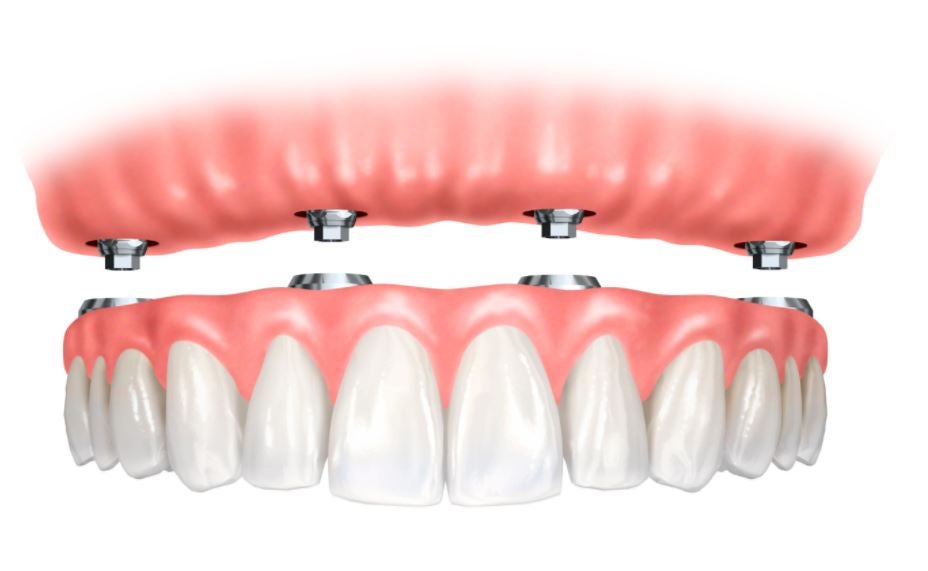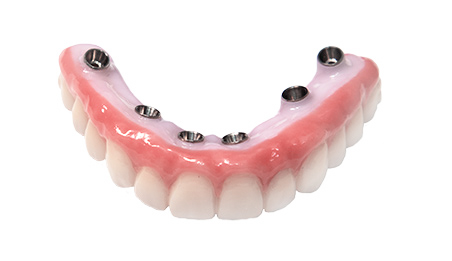Getting The Dental Sense To Work
Getting The Dental Sense To Work
Blog Article
The 10-Minute Rule for Dental Sense
Table of ContentsRumored Buzz on Dental SenseThe Main Principles Of Dental Sense The Main Principles Of Dental Sense Dental Sense Fundamentals Explained
are clinical tools operatively dental implanted into the jaw to bring back an individual's capability to chew or their look. They supply support for synthetic (fake) teeth, such as crowns, bridges, or dentures. When a tooth is shed because of injury or disease, an individual can experience difficulties such as fast bone loss, faulty speech, or changes to eating patterns that lead to pain.Oral implant systems contain a dental implant body and oral implant joint and may also consist of an abutment addiction screw. Dental implant vs bridge. The dental implant body is operatively inserted in the jawbone instead of the tooth's origin. The dental implant joint is normally affixed to the implant body by the joint fixation screw and prolongs through gums right into the mouth to sustain the affixed man-made teeth
(https://matthewmusic33101.wixsite.com/dental-sense/post/dental-veneers-cost-kids-dental-and-dental-implant-vs-bridge-what-you-need-to-know)Framework of The Oral Implant System picking oral implants, speak to your dental company regarding the prospective benefits and threats, and whether you are a prospect for the procedure. Things to consider: Your total wellness is a vital consider figuring out whether you are a great candidate for dental implants, the length of time it will certainly take to recover, and for how long the dental implant might stay in location.
Smoking may affect the recovery process and decrease the lasting success of the implant. The recovery process for the implant body might take numerous months or longer, during which time you typically have a temporary abutment instead of the tooth. the oral implant procedure: Meticulously comply with the oral health instructions offered to you by your dental copyright.
Little Known Questions About Dental Sense.
Implant failing can cause the requirement for another surgery to fix or replace the implant system. Brings back the capacity to chew Restores cosmetic look Aids maintain the jawbone from shrinking due to bone loss Protects the wellness of the surrounding bone and gums Assists maintain surrounding (neighboring) teeth stable Improves lifestyle Damage to surrounding natural teeth during dental implant positioning Injury to the surrounding cells throughout surgical treatment, such as sinus perforation Injury throughout surgery (for instance, fracture of surrounding jawbone) Poor feature, such as really feeling like the teeth do not attack together normally A sensation that the tooth hangs or twisting in position resulting from an abutment screw loosening Implant body failure (looseness of the implant body) because of systemic infection, which may be a lot more most likely in individuals with unchecked diabetes due to local infection in bone and gums sustaining the dental implant body as a result of postponed recovery, which might be most likely in people who smoke Difficulty cleaning up the gums around the implant, causing inadequate dental health Untreated periodontal illness Post-surgical tingling due to nerve impingement or damage Constantly inform healthcare providers and imaging technicians that you have oral implants prior to any type of magnetic vibration imaging (MRI) or x-ray treatments.
FDA is not familiar with any adverse occasions reported for MRI or x-ray procedures with dental implants. Oral implants systems are normally made from materials that adhere to worldwide consensus criteria of the International Organization for Standardization (ISO) or ASTM International. These standards have information of what makes a safe product.

An oral implant is a structure that changes a missing out on tooth. With screw-like devices, the specialist inserts a dental implant right into the jawbone, and it serves as a support for an artificial tooth, called a crown. A gadget called an abutment links the fabricated tooth to the oral implant. The crown is custom-made to fit the person's mouth and match the color of their teeth.
More About Dental Sense
Some people are not eligible for oral implant surgery. It is for oral doctors to operate people with: acute illnessuncontrollable metabolic diseasebone or soft cells condition or infectionIf these problems are dealt with, a person can have the surgical procedure. In, oral cosmetic surgeons avoid running on individuals with: If people with any one of the above go through dental implant surgical procedure, there is a higher threat official source of the dental implant failing.

Oral implant surgery is an individualized process. It's not the very same for everyone. The following offers a basic summary of what you can expect your dental professional, oral doctor, periodontist or prosthodontist to do: Position the implant surgically. Offer you time to heal. Attach the post and final crown, bridge or denture.
Next, your doctor will thoroughly place the dental implant into your jaw. If your implant is near the front of your mouth, your dental professional will make a momentary tooth for you to put on till you heal.
Unknown Facts About Dental Sense
Your supplier can tell you what to anticipate in your situation. During the healing stage, your jawbone must fuse to the dental implant. This procedure, called osseointegration, is crucial for security and long-lasting success. This procedure can take anywhere from 3 to 9 months. In some situations, it may take longer.
As soon as your implant heals, your dental expert can affix the joint (small port article) and your last restoration (crown, bridge or denture). This normally takes concerning one hour to complete and may need a 2nd small surgery. You shouldn't feel any type of discomfort during your dental implant treatment because your supplier will certainly make use of medication to numb your gums.
Report this page